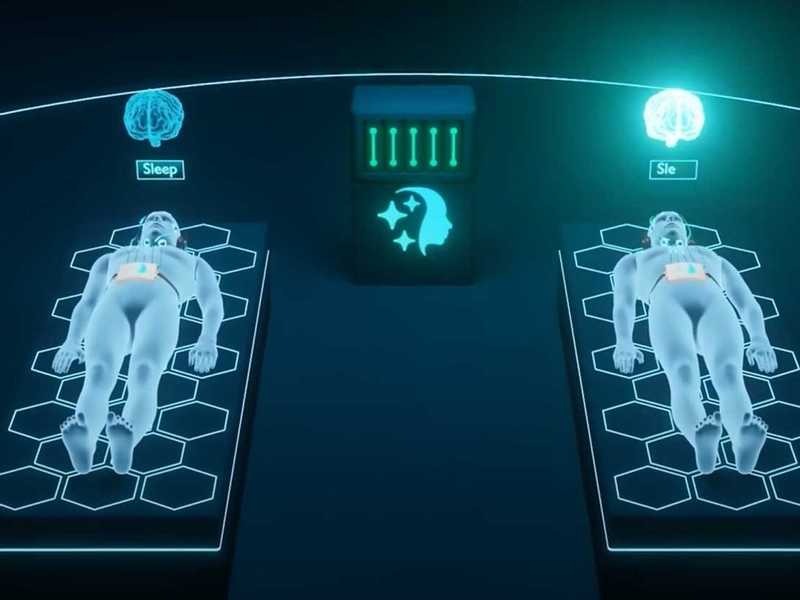In a development that blurs the line between science fiction and reality, neurotechnology startup REMspace has claimed an unprecedented achievement: successfully transmitting a word from one person’s dream to another’s while both were asleep. The company describes the experiment as a significant leap forward for Brain-Computer Interfaces (BCI), blending artificial intelligence, neuro-imaging, and sleep science.
The Dream-To-Dream Experiment
The experiment involved two individuals capable of lucid dreaming—the state of being aware one is dreaming. Using a sleep-monitoring helmet and a proprietary system called “Dream Language,” the company monitored the brain activity of both participants. Their sleep stages were synchronized using electroencephalogram (EEG) devices and multiple sensors to pinpoint the Rapid Eye Movement (REM) phase, where vivid dreams occur.
According to REMspace, one participant listened to a random word through headphones while asleep. They then vocalized this word within their dream. Remarkably, the company reports that the second dreamer received the same word in their dream just eight minutes later.
However, it is crucial to note that this claim has not been independently verified or published in a peer-reviewed scientific journal. As of now, no scientific evidence has been presented to confirm the actual transfer of information between the two brains.
MENA Experts Weigh In With Skepticism
The announcement has been met with considerable skepticism from the scientific community, including experts based in the MENA region. Professor David Melcher, a psychology professor and researcher at the Center for Brain and Health at New York University Abu Dhabi, stated that the concept of transferring words between dreamers remains scientifically unconfirmed.
“While scientists can estimate what people are seeing or thinking using tools like EEG and fMRI, transmitting information between two sleeping individuals is still a mystery,” Professor Melcher explained. He acknowledged that while the potential value could be purely for entertainment—”people might enjoy dreaming together”—there appears to be no other practical benefit at this stage.
Dr. Bobby Jose, a specialist neurosurgeon at Medcare Royal Hospital in Dubai, echoed this sentiment, stating that technology capable of decoding words within dreams or transmitting them between people “does not exist yet.”
“The brain exhibits intense electrical activity during sleep, but current tools cannot decode what a person is thinking,” said Dr. Jose. He emphasized that achieving such communication would require highly advanced BCIs capable of translating neural signals into words or ideas, a development that would also raise serious ethical questions about mental privacy. He concluded that the field remains “highly experimental and may take many years” to mature.
The Science Of Interactive Dreaming
The claims by REMspace build on existing, credible research into lucid dreaming. The phenomenon itself is well-documented, with decades of scientific study confirming that individuals can become aware they are dreaming and, in some cases, influence the dream’s narrative.
A 2021 study published in Current Biology demonstrated that it was possible to achieve real-time communication with lucid dreamers. In that research, led by Ken Paller from Northwestern University, participants responded to audio or light signals with specific eye movements or facial expressions, proving that a two-way dialogue with a sleeping person was feasible. REMspace’s experiment attempts to take this concept a step further by facilitating communication directly between two dreamers.
About REMspace
REMspace is a neurotechnology startup focused on pioneering new frontiers in sleep and dream research. According to its official website, the company is dedicated to building the world’s first dream messenger, aiming to unlock the potential for shared experiences and communication within the dream state.
Source: Alqabas















